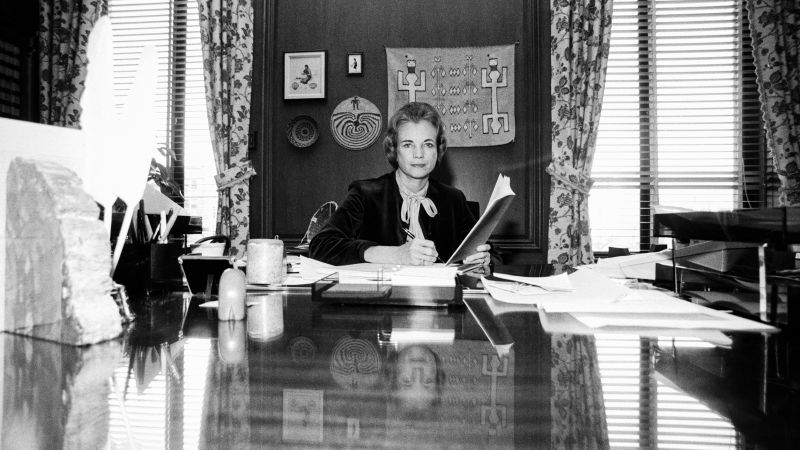The newly opened papers of the late Justice Sandra Day O’Connor shed light on the internal deliberations of the groundbreaking Supreme Court case Chevron USA v. Natural Resources Defense Council, which gave US regulators significant latitude to protect the environment and public health. The ruling almost never happened, as revealed by O’Connor’s notes that show how the justices struggled with statutory intricacies and compromised to reach a decision. The Chevron case, which tested the protections of the Clean Air Act, almost didn’t make it to the court at all, highlighting its tenuous beginnings and accidental landmark status.
The principle of agency deference, known as Chevron deference, requires judges to accept federal agencies’ interpretations of vaguely worded statutes regarding their mandates. Conservative critics argue that it has led to excessive regulation by executive branch agencies, while defenders of regulatory power believe agencies are needed to safeguard public health and welfare. The landmark Chevron decision, which became a seminal opinion, has been cited in lower court opinions and law review articles more than any other case, showcasing its lasting impact on the administrative state and regulatory disputes.
The importance of the Chevron decision has grown over the years, with subsequent decisions reinforcing the principle of agency deference. However, current Supreme Court cases may lead to the reversal of Chevron deference, with justices expressing concerns about favoring government over businesses and individuals challenging government policy. The tension between judges and agencies in interpreting statutory meaning has sparked debate among the justices, with some worried about the courts becoming overly involved in policymaking, as opposed to leaving those decisions to the political branches.
The Chevron case began when the Reagan administration changed standards for air quality and state permitting requirements, leading to a legal challenge over the interpretation of the Clean Air Act. The case initially struggled to gain enough votes from the justices to be heard, with Justice Lewis Powell eventually joining to accept the case. The decision-making process involved private deliberations among the justices, with differences not falling along ideological lines. Ultimately, a bare six-justice quorum decided unanimously in favor of the EPA’s interpretation of the statute in the Chevron case.
Justice John Paul Stevens, who wrote the Chevron opinion, emphasized the importance of agency expertise in interpreting statutes and resolving policy choices. The controversial issue of recusal in the case was brought up by O’Connor, who opted to recuse herself due to a potential conflict of interest involving her father’s estate holding stock in one of the parties to the case. The final decision, reached by a bare majority of six justices, upheld the EPA’s interpretation of the Clean Air Act, solidifying the principle of agency deference in administrative law. The internal workings of the court revealed in O’Connor’s notes provide a glimpse into how the justices deliberated and reached a unanimous decision in a landmark case that almost didn’t happen.


